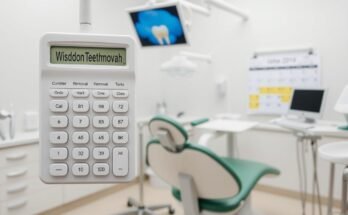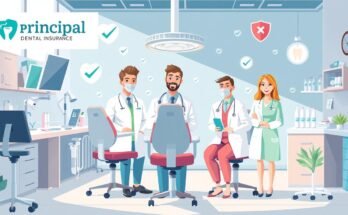Insurance: Does Health Insurance Cover Auto Accidents? Find Out-2025
Been in a car accident? You might wonder, “Does my health insurance cover auto accident injuries?”
The link between health insurance and auto accidents is complex. It involves many factors, like personal injury protection (PIP) and collision coverage. Knowing your insurance policies is key after a car crash.
In this article, we’ll explore health insurance and auto accidents in detail. We’ll look at different coverages and what to consider for your medical bills. If you’re curious about no-fault insurance laws or filing a health insurance claim, we’ve got answers. So, let’s start and see if your health insurance protects you in an auto accident.
Key Takeaways
- Health insurance may cover some medical expenses related to auto accidents, but the extent of coverage can vary.
- Personal injury protection (PIP) and medical payments coverage are important auto insurance policies that can help pay for accident-related medical costs.
- No-fault insurance laws in some states can impact how health insurance and auto insurance work together to cover accident expenses.
- Coordination of benefits between auto and health insurance is crucial to ensure you receive the maximum coverage and minimize out-of-pocket costs.
- Understanding the specifics of your health insurance and auto insurance policies is key to navigating the claims process after an accident.
Understanding Health Insurance and Auto Accidents
Health insurance and auto insurance are key when it comes to medical costs from car accidents. Health insurance covers many medical services, including those from car crashes. But, how much it covers depends on your policy.
Also Read: Target Premium Life Insurance: How It Works for You.
What Is Covered by Health Insurance?
Health insurance helps pay for medical costs from car accidents. This includes emergency care, hospital stays, and ongoing treatments. It also covers health insurance claims, car crash medical expenses, and personal injury protection.
The amount you get back depends on your plan’s deductibles, copays, and limits.
The Role of Auto Insurance in Accidents
Auto insurance is also vital for accident-related costs. It includes liability coverage for others’ medical expenses and damages. Plus, personal injury protection (PIP) and medical payments (MedPay) cover your own car crash medical expenses.
| Coverage Type | What It Covers |
|---|---|
| Health Insurance | Medical expenses related to auto accident injuries, including emergency care, hospital stays, and ongoing treatment |
| Liability Coverage | Medical expenses and damages for other drivers and passengers involved in the accident |
| Personal Injury Protection (PIP) | Medical expenses and lost wages for the policyholder, regardless of fault |
| Medical Payments (MedPay) | Medical expenses for the policyholder, up to the policy limits |
Knowing how health insurance and auto insurance work together is important after a car accident. Being aware of your options helps you get the medical care and financial support you need to recover.
Does Health Insurance Cover Auto Accidents? Find Out!
Many people are unsure about health insurance coverage for auto accidents. Does your policy cover medical costs from a car crash? The answer might surprise you.
Health insurance plans usually cover some auto accident injuries. But, how much coverage you get depends on your policy, injuries, and accident details. Knowing what’s covered and what’s not is important.
Auto insurance also plays a big role in covering medical costs from accidents. Many states require drivers to have personal injury protection (PIP) or medical payments coverage. This helps pay for costs not covered by health insurance. It’s important to understand how these policies work together to get the most coverage.
| Coverage Type | What It Covers | Limitations |
|---|---|---|
| Health Insurance | Typically covers medical expenses related to auto accident injuries, including hospital stays, doctor visits, and rehabilitation. | May have deductibles, co-pays, and restrictions on in-network providers. |
| Auto Insurance (PIP or Medical Payments) | Provides coverage for medical expenses regardless of fault, helping to fill the gaps left by health insurance. | Limits vary by state and policy, and may not cover all expenses. |
We’ll look closer at health insurance for auto accidents in the next sections. We’ll talk about different coverages, personal injury protection (PIP), and how to file claims. Knowing your rights and options helps you get the medical care and financial support you need after an accident.
Personal Injury Protection (PIP) Coverage
Personal injury protection (PIP) is key in auto accident insurance. It covers medical costs and other expenses from accidents, no matter who’s at fault. This coverage is vital for financial safety in crashes.
How PIP Covers Medical Expenses
PIP includes various medical costs from accidents:
- Medical treatment and hospital bills
- Rehabilitation and physical therapy costs
- Lost wages due to time off work for recovery
- Essential services, such as child care or housekeeping, if the injured party is unable to perform these tasks
The benefits and limits of PIP vary by state. In some places, it’s required by law, while in others, it’s optional. Knowing your state’s rules and how PIP works with health insurance is crucial.
PIP fills the gap between health insurance and accident costs. It adds a layer of financial security. Understanding PIP ensures you’re well-protected in accidents.
Medical Payments Coverage
Medical payments coverage (MedPay) is key in covering medical costs after an auto accident. It’s different from personal injury protection (PIP), which is required in some places. MedPay is an extra option you can add to your car insurance.
MedPay helps pay for medical bills for the driver, their passengers, and even people walking who get hit, no matter who’s at fault. It’s great for those with high deductibles or little health insurance. It ensures they get the medical care they need without huge costs.
| Coverage | Explanation |
|---|---|
| Medical Payments Coverage (MedPay) | Helps cover medical expenses for the policyholder, their passengers, and pedestrians involved in the accident, regardless of fault. |
| Personal Injury Protection (PIP) | Mandatory in some states, covers medical expenses and other costs related to injuries sustained in an auto accident, regardless of fault. |
MedPay and PIP differ mainly in their coverage limits. MedPay usually ranges from $1,000 to $10,000 per accident. But, it’s a good addition to your health insurance. It helps with deductibles, copays, and other costs from car accidents.
When looking at auto insurance, understanding MedPay is crucial. It adds a layer of financial safety in case of an accident. By reviewing your needs and your state’s requirements, you can get the right insurance. This protects you and your family from unexpected medical bills.
Collision Coverage and Auto Accident Injuries
Collision coverage is key in covering car repair costs after an accident. It doesn’t directly pay for medical bills. But, it can help lower your costs for repairs.
Deductibles and Out-of-Pocket Expenses
Collision coverage needs you to pay a deductible first. This can be from $250 to $1,000 or more. Once you’ve paid the deductible, your insurance covers the rest of the repair costs.
If you get auto accident injuries, you might still have big car crash medical expenses. Your health insurance will help with these costs. This way, you won’t have to pay everything out of pocket.
Knowing how your collision coverage and health insurance work together is crucial. This knowledge helps you prepare for the financial impact of an accident. It ensures you have the right coverage.
| Coverage | Deductible | Covered Expenses |
|---|---|---|
| Collision Coverage | $250 – $1,000+ | Vehicle repair costs after deductible |
| Health Insurance | Varies | Auto accident injuries and car crash medical expenses |
Uninsured/Underinsured Motorist Coverage
Auto accidents can be scary, but the right insurance can help. Uninsured/underinsured motorist coverage is key. It protects you if the other driver has little or no insurance.
This coverage helps when the other driver has no insurance or not enough. It covers your medical bills and other damages. It works with your health insurance to avoid financial stress after an accident.
Uninsured/underinsured motorist coverage can cover:
- Medical expenses from auto accident injuries
- Lost wages if you can’t work because of injuries
- Pain and suffering damages
- Other accident-related costs
Check your auto insurance policy to know your coverage limits. This ensures you’re protected if you hit an uninsured or underinsured driver.
| Coverage Type | What It Covers | Potential Benefits |
|---|---|---|
| Uninsured Motorist | Accidents caused by drivers with no liability insurance | Pays for your medical expenses, lost wages, and other damages when the at-fault driver has no insurance |
| Underinsured Motorist | Accidents where the at-fault driver’s liability limits are not enough to cover your costs | Helps cover the gap between the at-fault driver’s liability limits and your actual expenses, protecting you from financial hardship |
Knowing about uninsured/underinsured motorist coverage is crucial. It ensures you’re financially safe in an auto accident, no matter the other driver’s insurance. This coverage lets you focus on healing, not worrying about costs.
No-Fault Insurance Laws and Health Insurance Claims
Auto accidents can be complex, especially when it comes to insurance. In many states, no-fault insurance laws are key. They help figure out how health and auto insurance cover medical costs after an accident. Knowing these laws is crucial for handling claims and getting your health insurance right.
Understanding Your State’s No-Fault Laws
No-fault insurance, or personal injury protection (PIP), requires drivers to have a certain amount of coverage. This coverage pays for medical costs and lost wages, no matter who caused the accident. States like Florida, Michigan, New Jersey, New York, and Pennsylvania have these laws. Each state has its own rules, so it’s important to know yours.
In states with no-fault laws, your auto insurance’s PIP usually pays first for medical bills after an accident. This might mean your health insurance won’t kick in unless your bills are more than your PIP coverage. Knowing this can make the claims process smoother. It helps ensure you get the right coverage for car crash medical expenses and auto accident injuries.
| State | No-Fault Insurance Laws | PIP Coverage Limits |
|---|---|---|
| Florida | Mandatory PIP coverage of $10,000 | $10,000 per person |
| Michigan | Mandatory PIP coverage with unlimited benefits | Unlimited medical benefits |
| New Jersey | Mandatory PIP coverage of $15,000 | $15,000 per person |
Knowing your state’s no-fault insurance laws and how they work with your health insurance is key. It helps you deal with health insurance claims better after an accident. This knowledge can reduce your costs and make sure you get the coverage you deserve.
Filing a Health Insurance Claim After an Auto Accident
If your health insurance covers injuries from car accidents, knowing how to file a claim is key. This process helps cover your health insurance claims and auto accident injuries without a big financial hit from car crash medical expenses.
To start, collect important documents like the police report and medical records. Also, tell your health insurance provider about the accident right away.
- Contact your health insurance provider and inform them of the auto accident.
- Provide the necessary documentation, such as the police report, medical bills, and any other relevant information.
- Coordinate with your auto insurance provider to determine which coverage (health or auto) should be the primary payer for your medical expenses.
- Follow up with your health insurance provider to ensure the claim is being processed and any outstanding issues are addressed.
- Be prepared to provide additional information or documentation if requested by your health insurance company.
Handling claims after an accident can be tough, but knowing your rights helps. Keep in touch with your insurance and pay attention to the details. This ensures your health insurance claims are handled right.
| Key Steps for Filing a Health Insurance Claim After an Auto Accident |
|---|
| 1. Contact your health insurance provider and report the accident |
| 2. Gather necessary documentation (police report, medical bills, etc.) |
| 3. Coordinate with your auto insurance provider to determine primary coverage |
| 4. Follow up with your health insurance provider to ensure the claim is being processed |
| 5. Provide any additional information or documentation as requested |
Coordination of Benefits: Auto and Health Insurance
Auto accidents can lead to high costs, from medical bills to car repairs. Knowing how your health and auto insurance work together can help. This way, you can get more coverage and pay less out of pocket.
“Coordination of benefits” means figuring out which insurance pays first when you have both. This is key to getting all the benefits you deserve without extra costs.
Understanding the Coordination of Benefits Process
The process of coordination of benefits works like this:
- Your auto insurance, like personal injury protection (PIP) or medical payments coverage, pays first for accident-related medical costs.
- If your auto insurance doesn’t cover all costs, your health insurance kicks in to pay the rest.
- Also, your collision coverage might help with injury costs, depending on your policy.
- Lastly, uninsured/underinsured motorist coverage can help if the other driver’s insurance is not enough.
Knowing this process helps you navigate the claims process smoothly. It reduces the financial stress after an accident.
Navigating No-Fault Insurance Laws
In some places, no-fault insurance laws make things more complex. These laws make your auto insurance the main payer for medical costs, no matter who was at fault. It’s important to know how these laws affect your insurance order.
By working with your insurance and understanding the process, you can ensure your medical costs are fully covered. This lets you focus on healing after an accident.
Conclusion
Health insurance and auto accidents have a complex relationship. It’s important to know the different coverage options. Health insurance can help with medical costs from car crashes, but the details depend on several factors.
One thing to consider is no-fault insurance laws. These laws affect how health insurance claims are handled after an accident. Knowing your state’s laws can help you deal with claims better and get your medical bills covered.
The connection between health insurance and auto accidents is intricate. There are many factors and coverages to think about. By understanding these, you can protect your finances if you’re in a car crash. This applies whether you’re driving, riding as a passenger, or walking.
| Key Insurance Coverage | What it Covers |
|---|---|
| Personal Injury Protection (PIP) | Medical expenses, lost wages, and other costs related to car accident injuries |
| Medical Payments Coverage | Medical expenses for you and your passengers, regardless of fault |
| Collision Coverage | Repairs to your vehicle in the event of an accident |
| Uninsured/Underinsured Motorist Coverage | Medical expenses and other costs if you’re hit by a driver with insufficient or no insurance |
Knowing about these coverages can help you deal with health insurance claims after a car accident. This way, you can make sure your medical costs are fully covered.
Additional Resources
Looking for more info on health insurance claims and auto accident injuries? We’ve got a list of resources for you. You’ll find educational articles, industry guides, and government websites. They offer insights on car crash medical expenses, personal injury protection, and more.
The National Association of Insurance Commissioners (NAIC) has a guide on “Auto Insurance: The Basics”. It explains different coverage options and their relation to health insurance. The Insurance Information Institute (III) also has detailed info on “Auto Insurance” and “Health Insurance” on their site. They answer common questions and scenarios.
For specific guidance, check your state’s Department of Insurance or Department of Motor Vehicles website. They can help you understand no-fault insurance laws and regulations in your area. They also offer tips on filing health insurance claims after an auto accident. The U.S. Department of Health and Human Services’ website has info on coordinating benefits between auto and health insurance.
FAQ
What is covered by health insurance when it comes to auto accidents?
Health insurance for auto accident injuries varies by policy. Generally, it covers emergency care, hospital stays, doctor visits, and rehab for crash injuries.
How does auto insurance coverage, like personal injury protection (PIP) and medical payments, interact with health insurance?
Auto insurance, like PIP and medical payments, helps with accident medical costs. It works with your health insurance to offer more coverage and lower costs.
What is the role of collision coverage when it comes to auto accident injuries?
Collision coverage pays for vehicle damage. It indirectly helps with medical costs by covering deductibles and cost-sharing with your health insurance.
How does uninsured/underinsured motorist coverage work in the event of an auto accident?
Uninsured/underinsured motorist coverage protects you if hit by an uninsured driver. It supplements your health insurance for accident medical costs.
How do no-fault insurance laws affect health insurance claims after an auto accident?
In no-fault states, auto insurance pays medical costs first, regardless of fault. This affects filing health insurance claims and benefits coordination.
What is the process for filing a health insurance claim after an auto accident?
To file a claim for auto accident injuries, submit medical bills and records to your insurance. Also, coordinate with your auto insurance for benefits.
How do health insurance and auto insurance policies coordinate to cover the costs of an auto accident?
Coordination of benefits is key with health and auto insurance. They work together to protect you and reduce costs after an accident.
Sajjad Hossain is an experienced writer on StatusCaption.xyz, specializing in insurance, business ideas, money management, and investment. With a passion for simplifying complex financial topics, [Author Name] provides clear and actionable insights to help readers make informed decisions in their financial journey. Committed to delivering expert advice and practical tips, Sajjad Hossain aims to empower readers to achieve their financial goals confidently and strategically.




